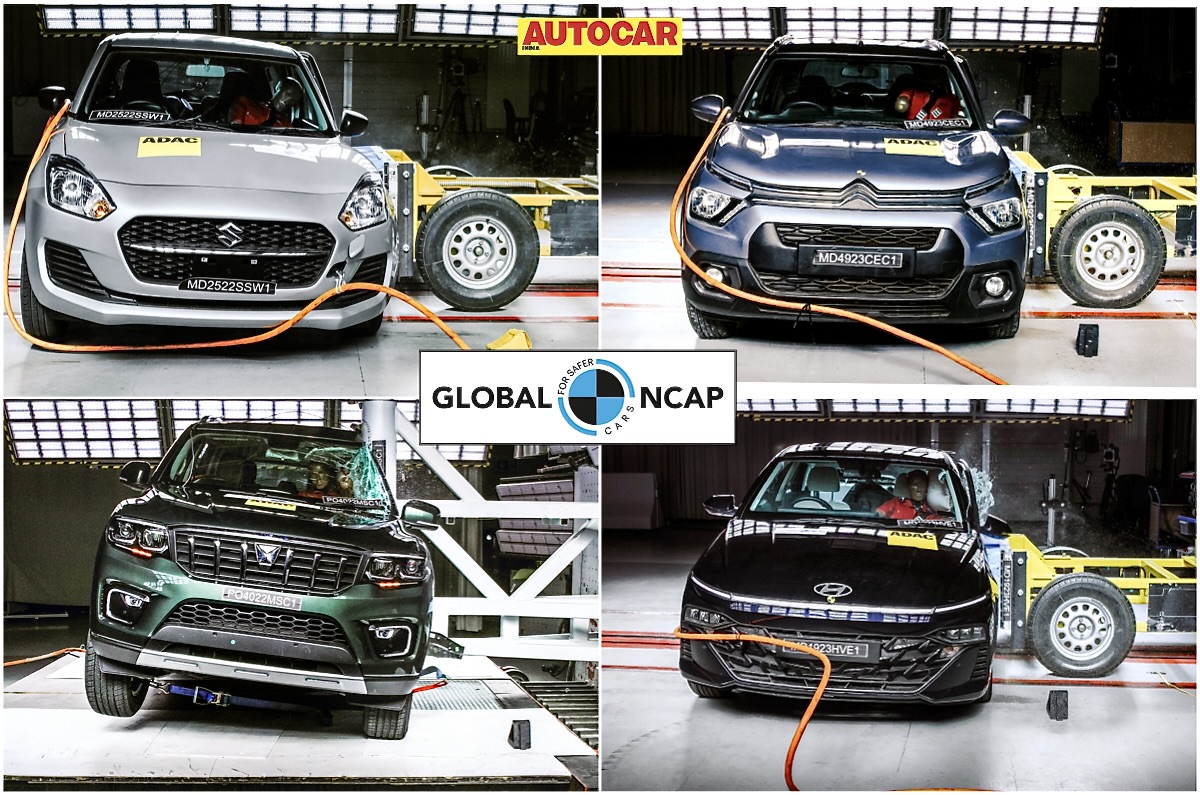
Global NCAP’s new crash test protocols came into effect in July 2022, and in under two years, the organisation has tested 18 made-in-India models under the new norms. Compared to 10 years ago, when the Safer Cars for India campaign began, there are definitely more cars and SUVs scoring higher in the crash tests; out of the 18 models tested, half of them are 5-star rated cars and SUVs. Without further ado, here are the results of every India car and SUV tested by Global NCAP since July 2022.
It should be noted that Global NCAP is unlikely to perform more crash tests on made-in-India models as India’s own Bharat NCAP safety assessment programme has been inaugurated and has already begin testing cars. What is likely to be the last round of Global NCAP tests saw the Honda Amaze, Kia Carens and Mahindra Bolero Neo being put through the stringent crash test.
15. Citroen eC3 – 0 stars (20.86 points)
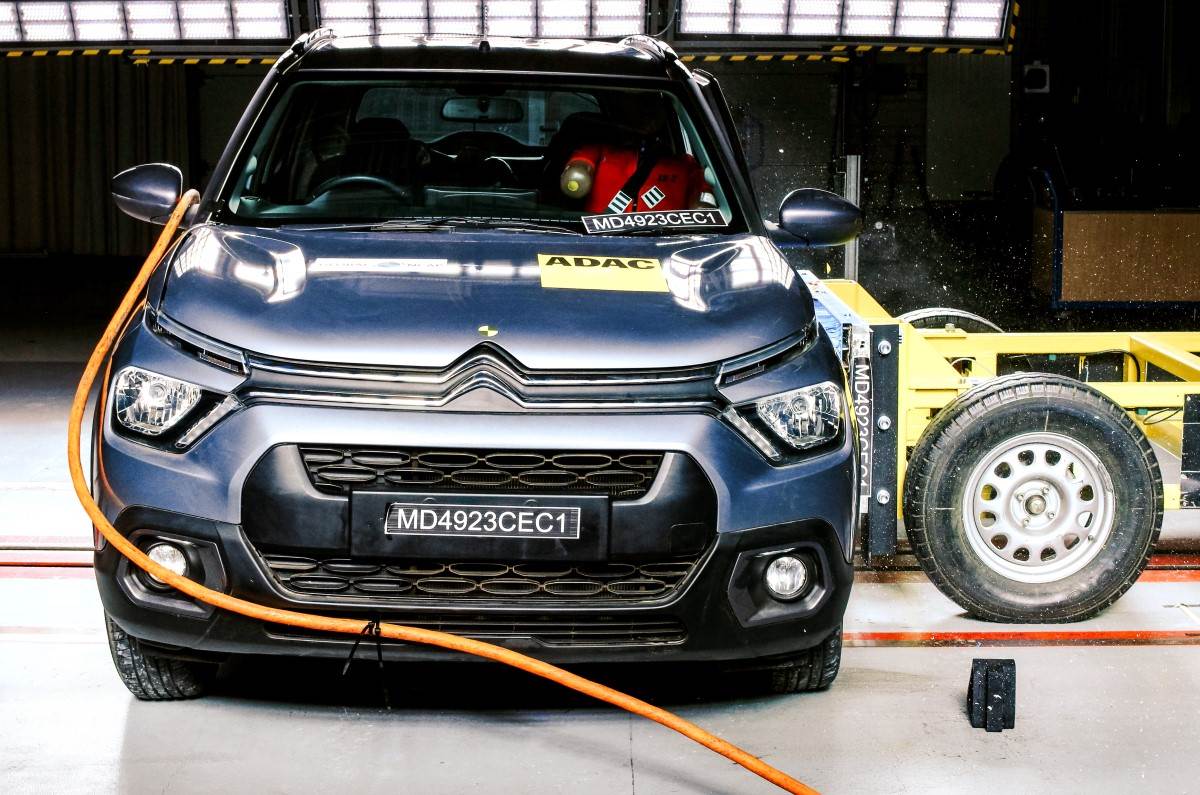
The Citroen eC3’s zero-star rating comes despite scoring 20.86/34 points in adult occupancy protection (AOP) – the electric hatchback didn’t have ESC, its seatbelt reminders did not meet the organisation’s standards, and it did not comply with pedestrian safety norms. Protection for the driver and passenger’s chest, and the driver’s legs was also deemed to be less than adequate. The first EV to be tested by Global NCAP under the new norms, the eC3 currently has the lowest AOP rating among all the cars and SUVs tested by the organisation.
The eC3 has a score of 10.55 out of 49 for child occupancy protection (COP), earning it 1-star. This is due to a lack of ISOFIX child seat mounts, excessive forward exposure and head contact with vehicle interior for the three-year-old dummy in the front impact tests, and the 18-month-old dummy’s head was exposed in the side impact tests.
14. Maruti Suzuki Ignis – 1 star (16.48 points)
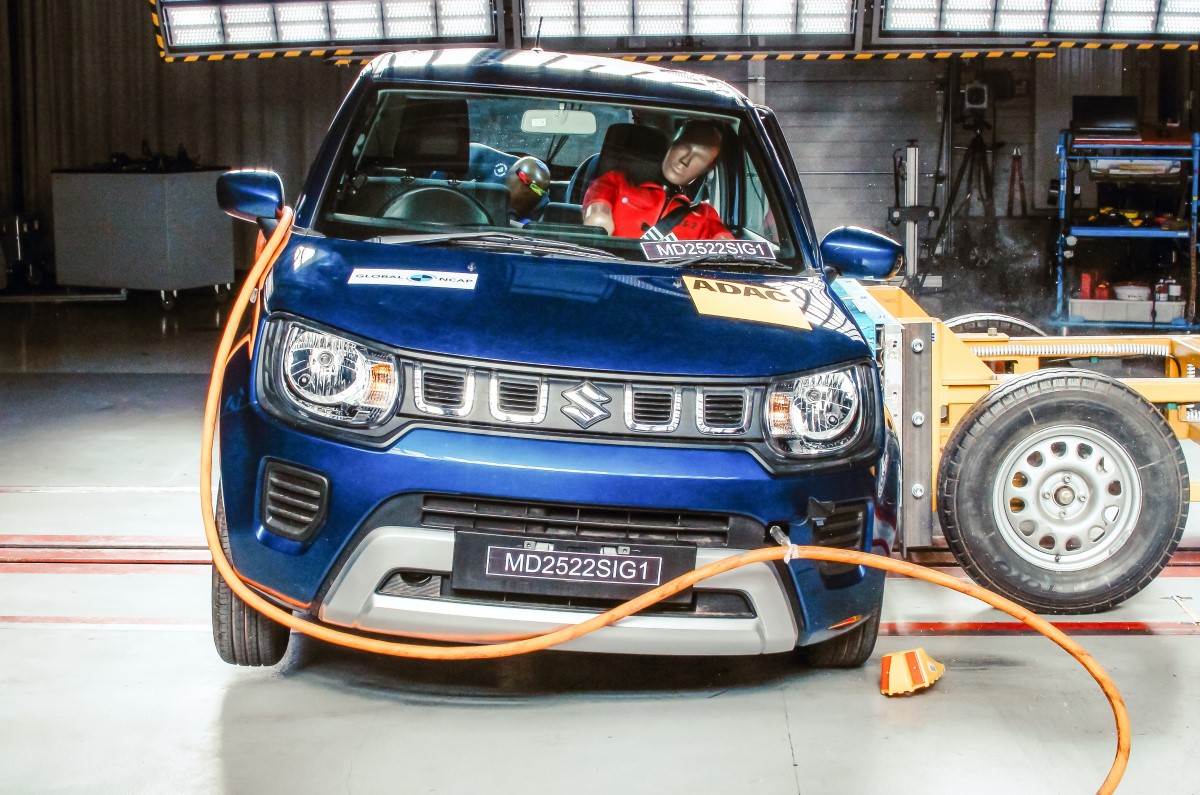
Tested in the December 2022 round of tests, Maruti’s premium tall-boy hatchback scored 16.48 points (out of 34) in adult occupancy tests – 9.6 points in the frontal offset deformable barrier test and 6.91 points in the side movable deformable barrier test – which saw it receive a 1-star rating. With just 3.86 points out of a maximum 49, the Ignis was awarded zero stars for COP.
The hatchback’s body shell was also rated as unstable, it did not get ESC as standard at the time, and it didn’t meet pedestrian protection norms, all of which meant the Ignis received a lower score. Dual front airbags and ISOFIX anchors were standard at the time, though since then, the Ignis has been updated with ESC and is now said to meet pedestrian safety norms.
13. Maruti Suzuki Swift – 1 star (19.19 points)
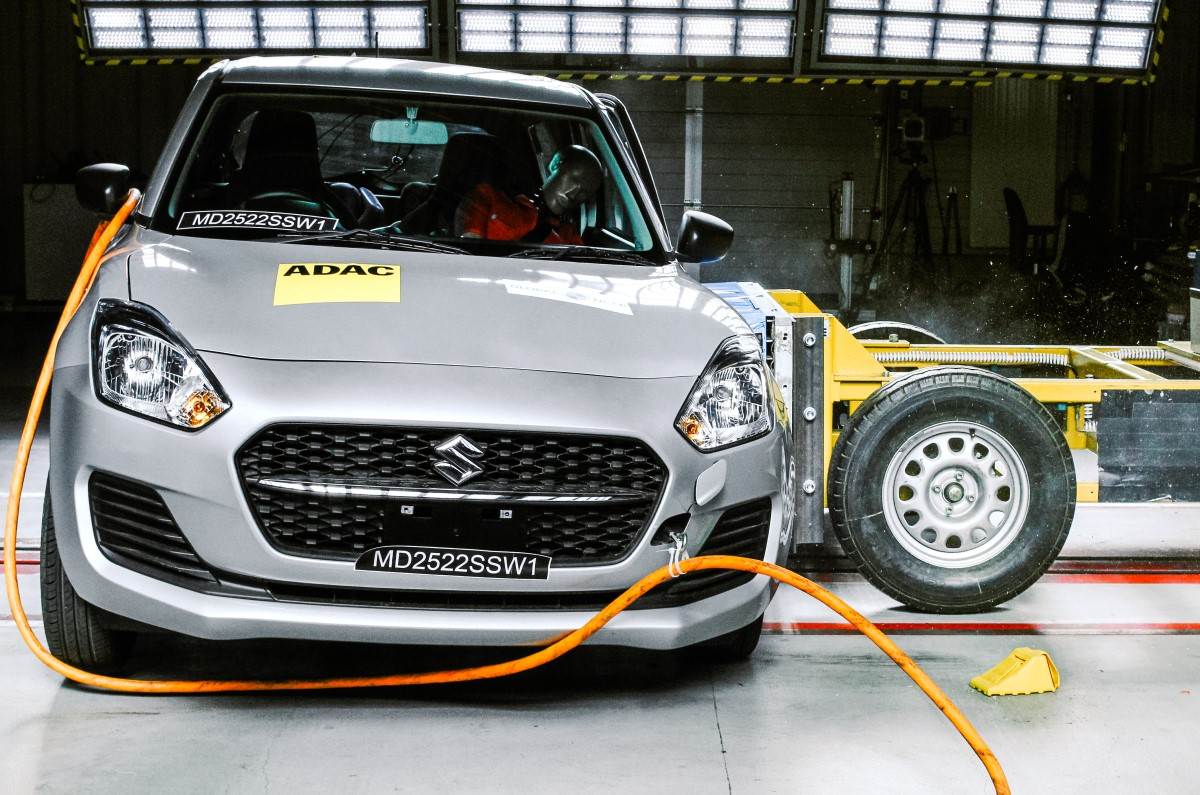
Maruti’s answer to the Hyundai Grand i10 Nios, the Swift, scored 19.19 points in the adult occupant protection test, giving it a 1-star rating. As for the side deformable barrier test, it scored 12.9 points out of 17, while it scored 16.68 points out of a possible 49 for COP.
Global NCAP also noted that the footwell area and the bodyshell were unstable, and it did not comply with pedestrian protection norms. As standard, the Swift comes equipped with dual airbags, ESC (not standard at the time of testing) and ISOFIX child seat mounts.
12. Maruti Suzuki Wagon R - 1 star (19.69 points)
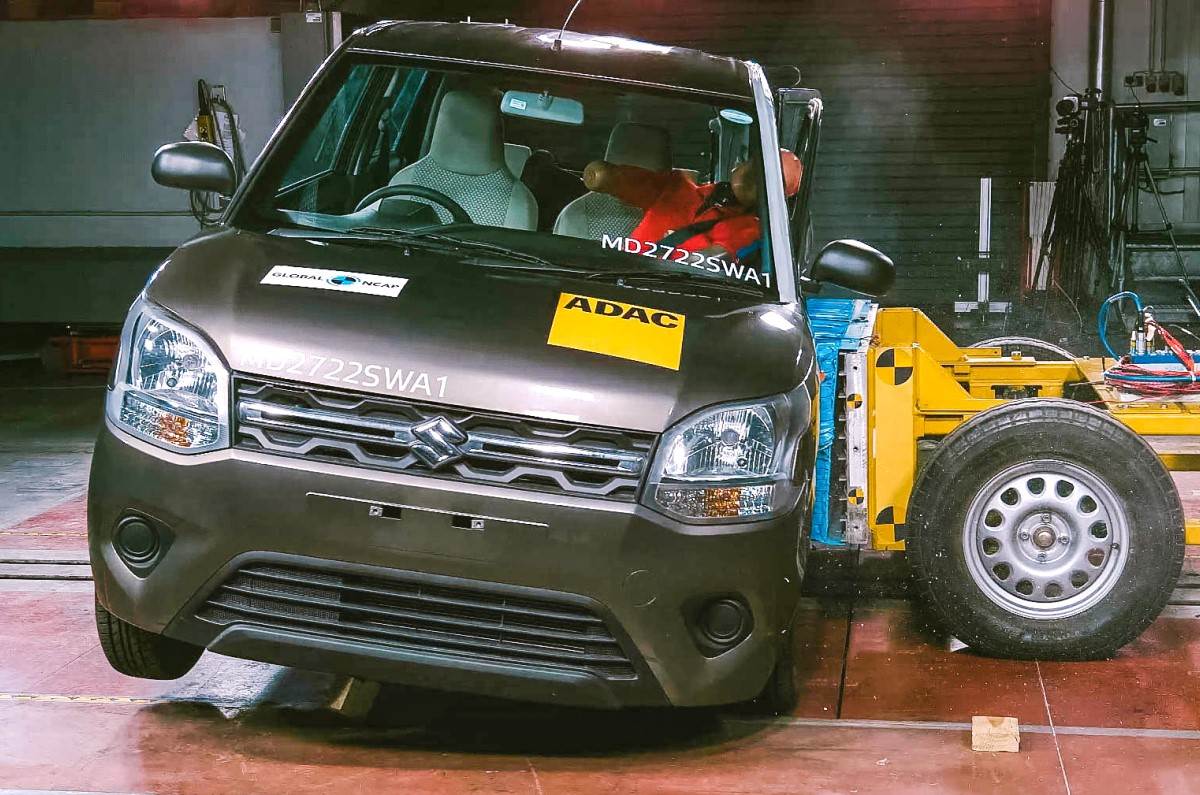
Maruti Suzuki’s Wagon R scored 19.69 points for AOP, including 13 out of 17 points in the side deformable barrier test, giving it a 1-star rating. There was no side pole impact test because the car does not have curtain airbags and it didn’t meet the pedestrian safety norms either. As for child protection, the Wagon R managed a zero-star rating, scoring 3.40 out of 49 points.
Furthermore, the footwell and bodyshell were also rated as 'unstable' and unable to withstand any further loadings. The Wagon R comes standard with safety equipment like dual airbags, ESC (not standard at the time of testing) and seat belt reminders.
11. Maruti Suzuki S-Presso - 1 star (20.03 points)
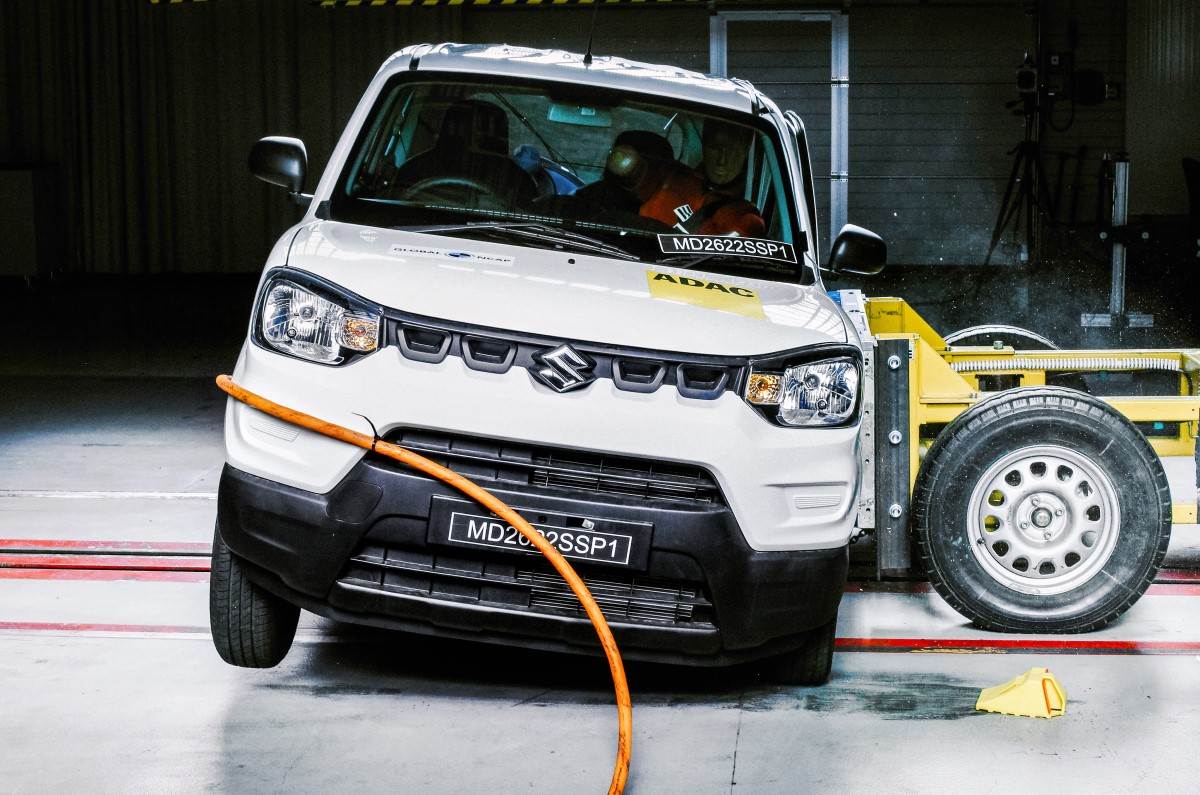
Like its siblings the Maruti S-Presso also managed a 1-star for AOP, scoring 20.03 points out of a maximum of 34. In the side deformable crash test, it managed to score 11.9 points out of a possible 17. However, it was not subjected to the pole-impact test, since it did not have any form of side head protection, even as an option. For COP, it was awarded just 3.52 points out of a possible 49 (zero stars).
Testers also mentioned that the S-Presso’s bodyshell was unstable and not capable of withstanding further loadings. The S-Presso comes standard with dual airbags and seat belt reminders, while ESC is reserved for the AMT variants.
10. Mahindra Bolero Neo – 1 star (20.26 points)
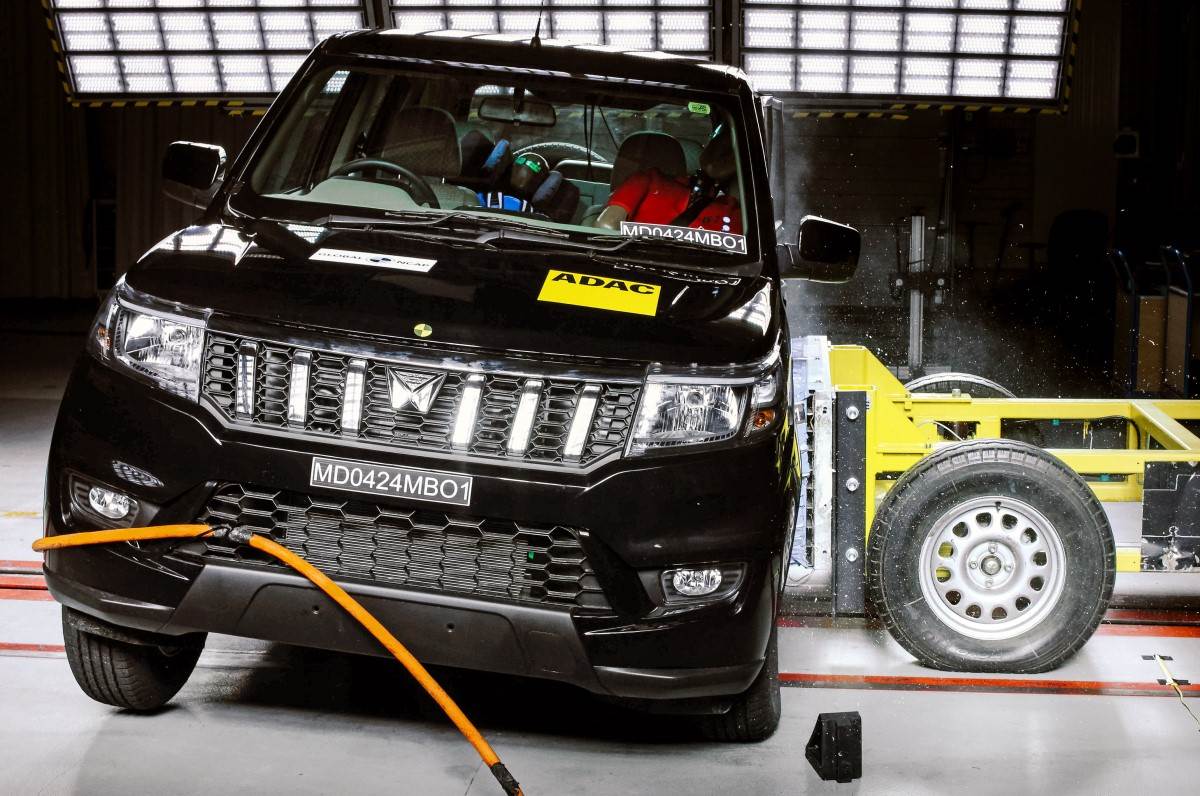
Mahindra’s Bolero Neo is built on an older platform, and was reported to have an unstable structure and footwell area, a lack of curtain airbags and seat belt reminders for all passengers, along with side-facing third-row seats. All this resulted in a 1-star rating for AOP, with a score of 20.26/34.
The Bolero Neo was awarded a child safety rating of 1-star (12.71/49 points) as Global NCAP noted the absence of three-point seat belts for all passengers, the lack of a passenger airbag deactivation switch, and there being only one child restraint system (CRS). While the three-year-old dummy was offered almost full protection, the SUV’s safety kit could not prevent head exposure during the frontal impact for the 18-month-old dummy.
9. Maruti Suzuki Alto K10 - 2 stars (21.67 points)
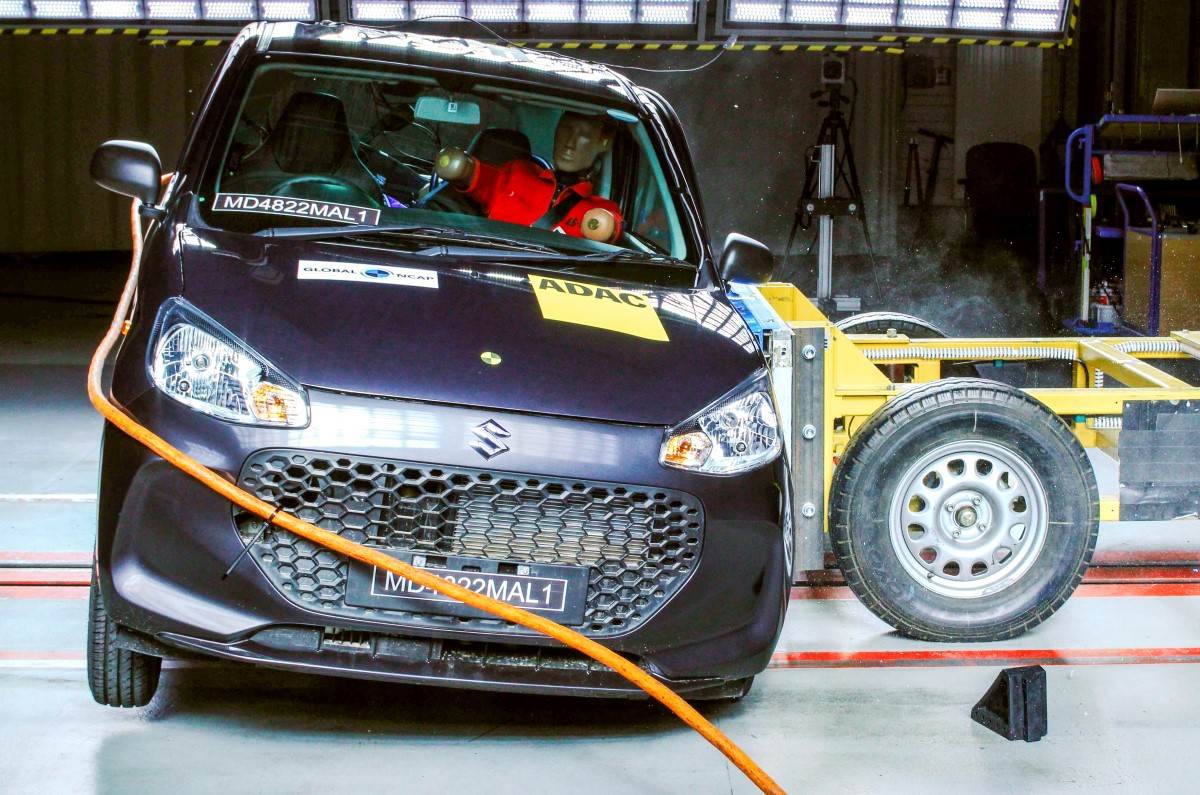
Maruti’s smallest model has the highest Global NCAP rating – the Alto K10 scored 21.67 points in AOP, securing a 2-star rating. It was awarded 12.4/17 points in the side deformable barrier test. Global NCAP noted that the bodyshell was stable, and capable of withstanding further loadings, although the footwell area was rated unstable. However, the K10, like other Marutis here, doesn’t offer curtain airbags, and hence, it wasn’t subjected to the side pole impact test and it didn’t comply with the new pedestrian safety norms either.
As far as child occupant protection goes, the Alto K10 got just 3.52/49 points, for a zero-star rating. Standard safety features on the Alto K10 include dual airbags and seat belt reminders.
8. Honda Amaze - 2 stars (27.85 points)
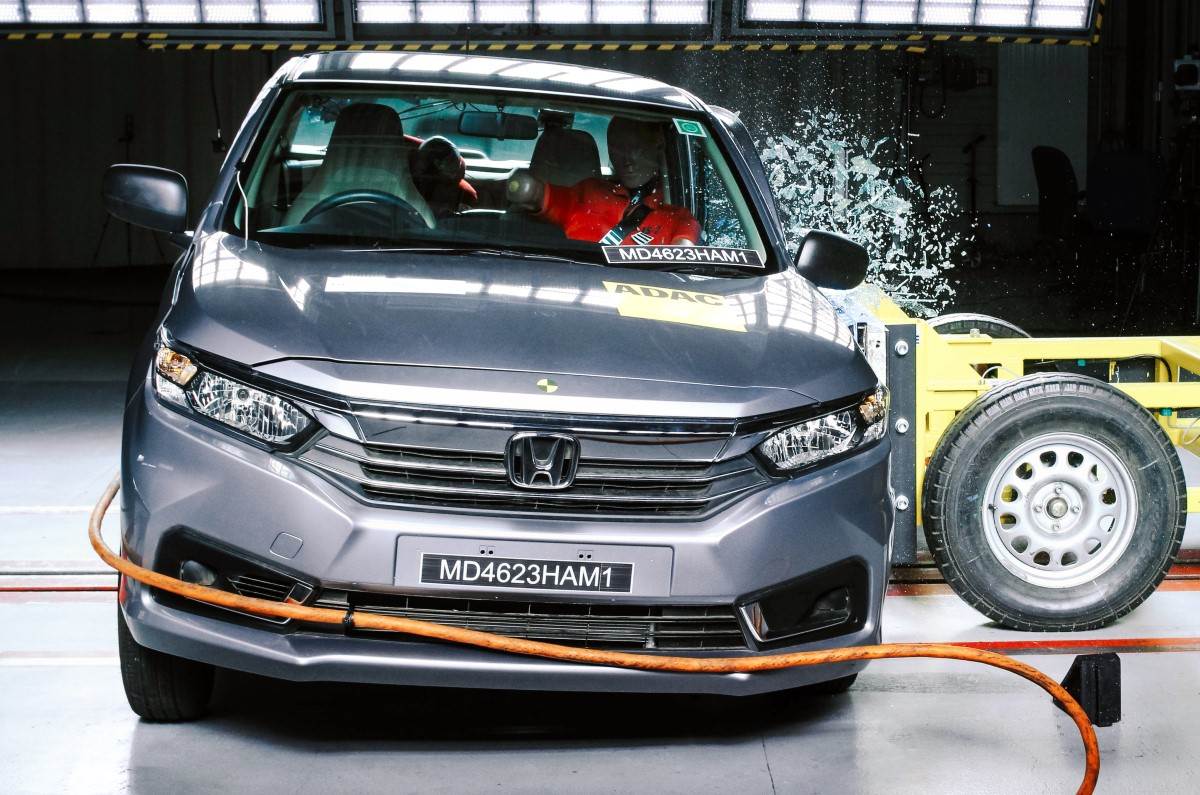
The Amaze compact sedan scored 27.85/34 points and 8.58/49 points in AOP and COP, earning a 2-star and a 0-star rating, respectively. The reasons for the AOP rating include low chest and knee protection, and a lack of ESC, though the bodyshell was deemed stable. Honda had provided ISOFIX anchors as standard, though the Amaze still scored poorly in COP tests as the three-year-old dummy’s head made contact with the interior during frontal impact tests, and the 18-month-old dummy was ejected from the seat.
Whether the recent update to the Amaze’s safety kit will result in a better score from GNCAP is unknown as the Bharat NCAP safety assessment programme has been inaugurated, which means it’s unlikely to be tested again by the international organisation.
7. Kia Carens - 3 stars (22.07 points)
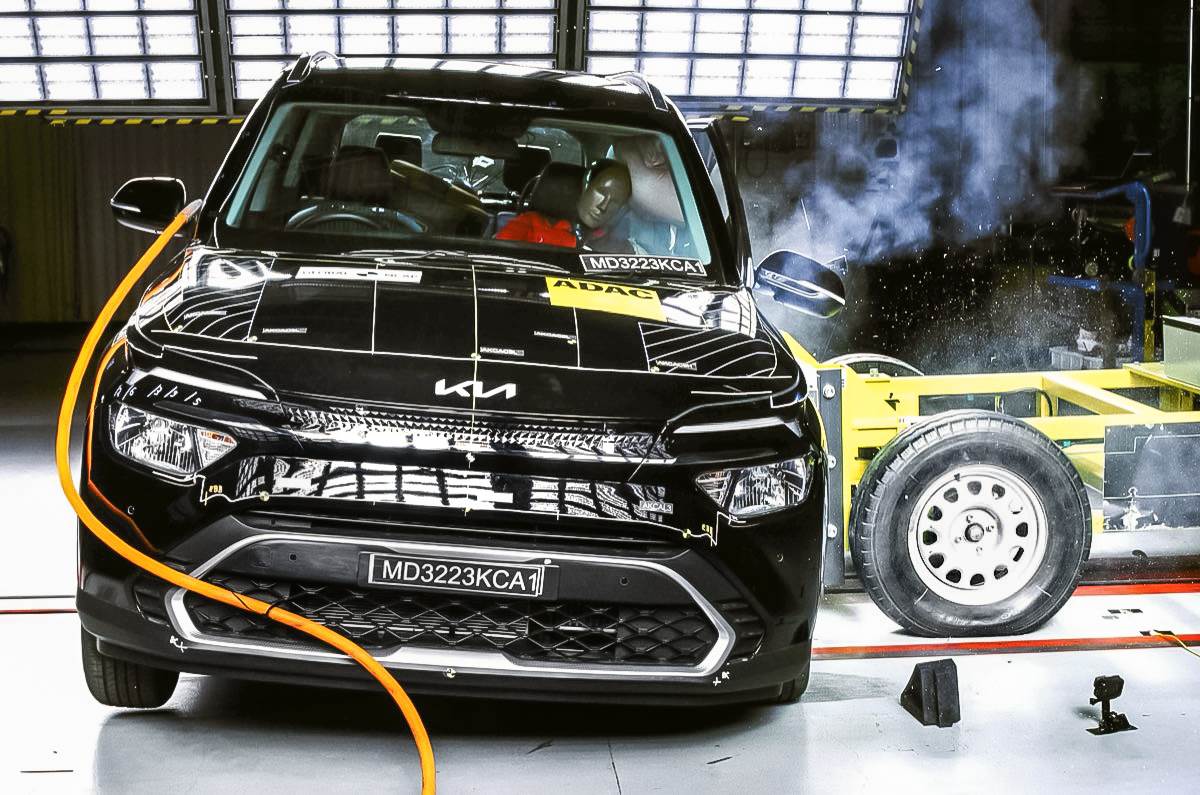
Kia’s smaller three-row MPV, the Carens, received a 3-star rating (22.07 points out of a max of 34) for AOP, though that result arrived after a second test under the new norms. In the first round of testing under the new protocols, the Carens received zero stars for adult occupancy protection due to the driver dummy suffering neck injuries. The Korean brand is said to have immediately improved the restraint systems, which is what helped the MPV achieve its 3-star rating. Despite having six airbags as standard, an unstable bodyshell and that the seat belt reminders only fulfil requirements for the front seats marked the Carens down.
The Carens’s child occupancy score was 41 out of 49, earning a 5-star rating in this area. Kia’s MPV comes with six airbags, ESC, rear parking sensors, hill-start assist, rear disc brakes, three-point seat belts for all seats and ISOFIX anchors, as standard.
6. Hyundai Verna - 5 stars (28.18 points)
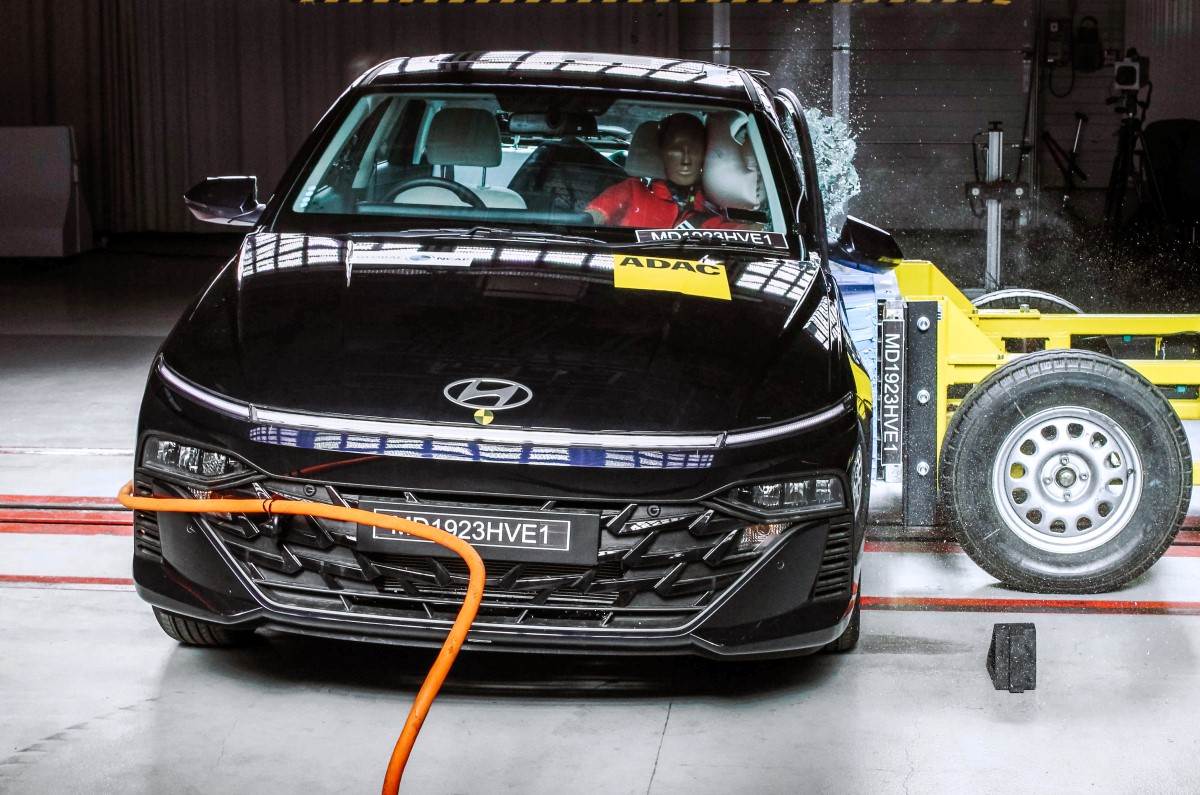
Hyundai’s new Verna was the first model from the Korean brand’s India portfolio to get a 5-star rating. The Honda City rival scored 28.18/34 points in adult occupant protection. In the side pole impact test, the Verna was rated ‘OK’, but the body shell was rated unstable and not capable of withstanding further loadings. The model tested was equipped with six airbags, ESC, ISOFIX mounts and seat belt reminders for all seats, as standard.
In the COP tests, the Verna scored 42 points out of 49 and it also complied with UN 127 and GTR9 pedestrian protection norms. There was a CRS (Child Restraint System) failure was noted after the side-impact test, but the manufacturer identified this as a one-off; Global NCAP performed a subsequent higher energy side-impact test and the CRS showed no further sign of failure.
5. Mahindra Scorpio N - 5 stars (29.25 points)
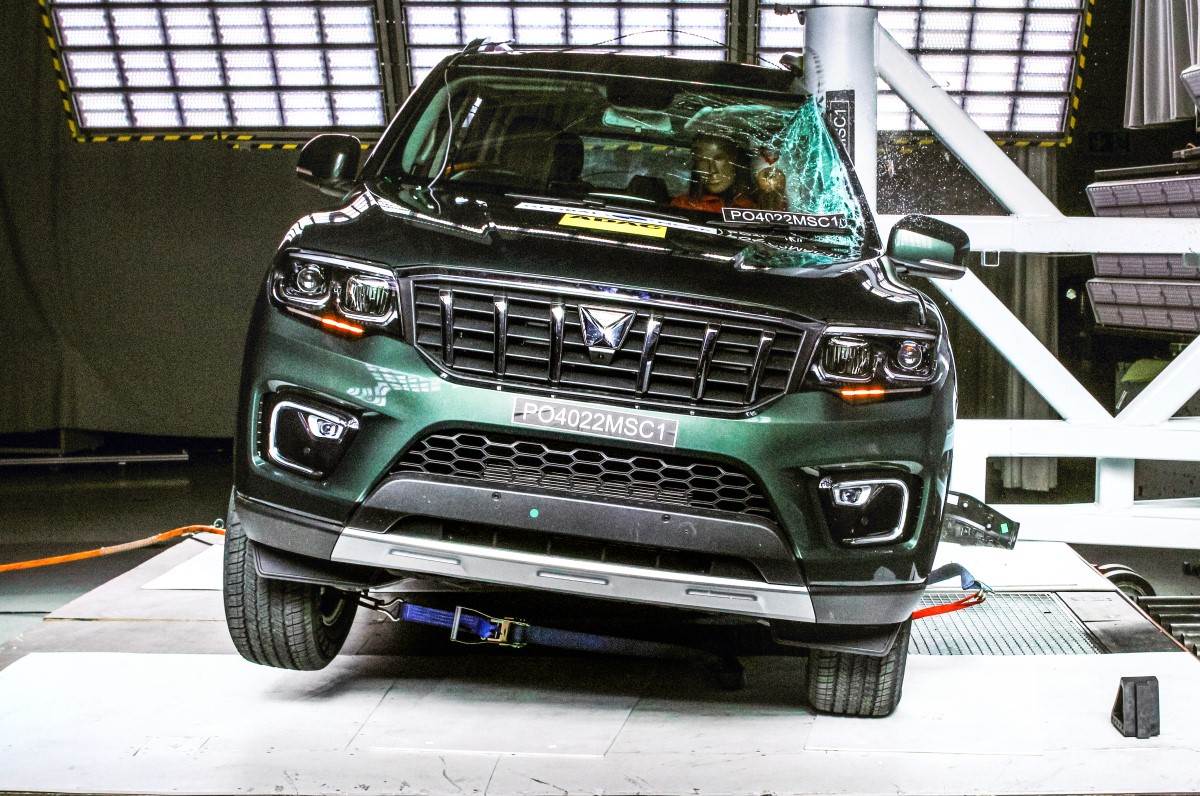
The Mahindra Scorpio N scored 29.25 points out of 34 in AOP tests, which earned it a 5-star rating. In the side impact test with a deformable barrier, the Scorpio N offered good protection, scoring 16/17 points and receiving an ‘OK’ rating for the side pole impact tests. Global NCAP mentioned that the bodyshell and the footwell area of the SUV were stable and capable of withstanding further loadings. The Scorpio N also met the new pedestrian safety requirements. As for standard safety features, the Scorpio N packs in two airbags, seatbelt reminders and ESC (optional on the Z2 and Z4 trims, standard on others). However, its COP scores weren’t as good – the Scorpio N scored 28.93/49 points, earning a 3-star rating.
4. Volkswagen Taigun/Skoda Kushaq - 5 stars (29.64 points)
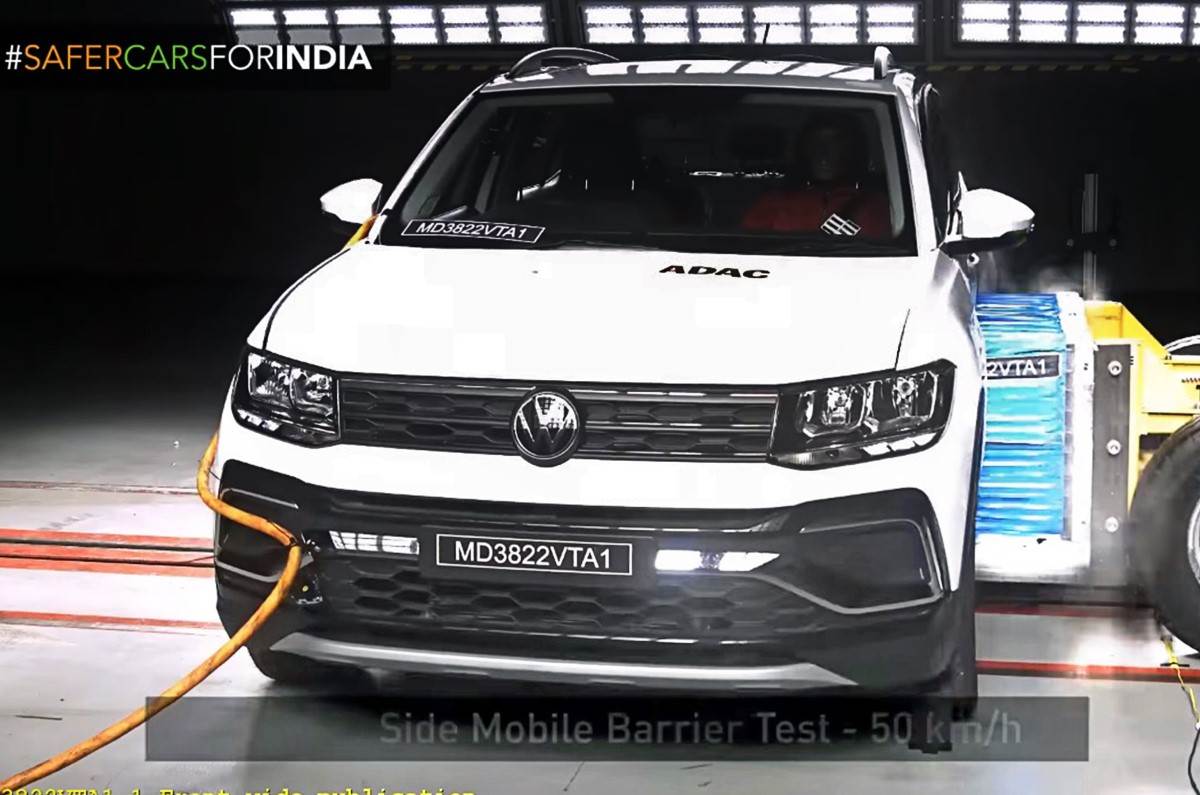
Considering the Kushaq and Taigun are based on the same platform, it isn’t surprising that they have identical safety scores. VW and Skoda’s midsize SUVs were the first models to be tested under GNCAP’s new norms, and both received 29.64 points in AOP, securing a 5-star rating. Interestingly, Global NCAP used a two airbag version of the SUVs, while a six airbag version was used for the side pole impact test. In the former, the two scored 14.5 points out of a possible 17, while they received an ‘OK’ rating for the latter. Both SUVs also met the UN 127 pedestrian safety norms, but not the GTR9 norms.
Additionally, they also achieved a 5-star rating in the child occupant protection test, scoring 42 points. The testers also rated the bodyshell of the SUVs as stable and capable of withstanding further loadings. Standard safety kit on both includes dual airbags, ESC, traction control and ISOFIX child seat mounts.
3. Volkswagen Virtus/Skoda Slavia - 5 stars (29.71 points)
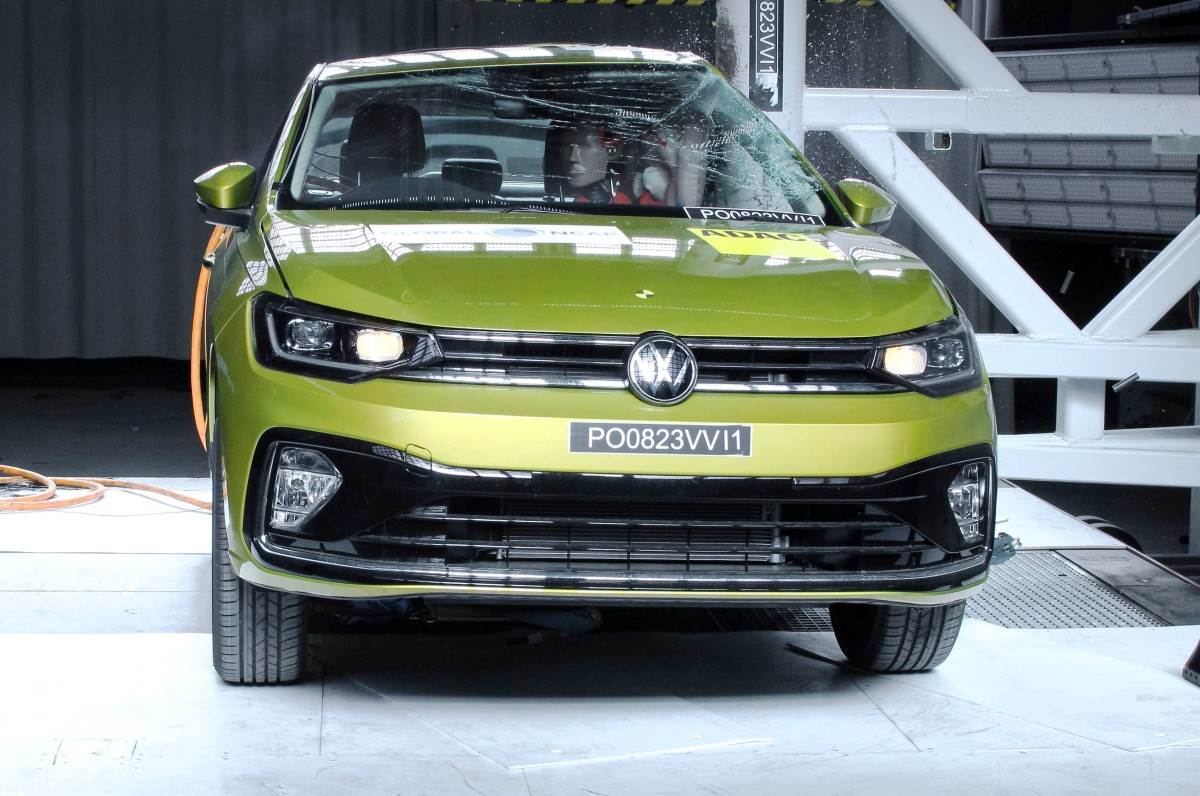
Like their SUV siblings, Skoda and Volkswagen’s midsize sedans also got a 5-star rating for adult occupancy protection, but with an even higher score of 29.71/34 points. The Slavia and Virtus earned 14.2 points out of a possible 17 in the side impact test with a deformable barrier, and received an ‘OK’ in the side pole impact tests. Also unlike the SUVs, the sedans met UN 127 and GTR9 pedestrian safety norms.
The Slavia and Virtus scored a high 42/49 in the COP tests, earning a 5-star rating. GNCAP noted that the bodyshell and the footwell area of the sedans were stable and capable of withstanding further loadings. Both are equipped with dual airbags, ESC, traction control and ISOFIX child seat mounts as standard.
2. Tata Nexon - 5 stars (32.22 points)
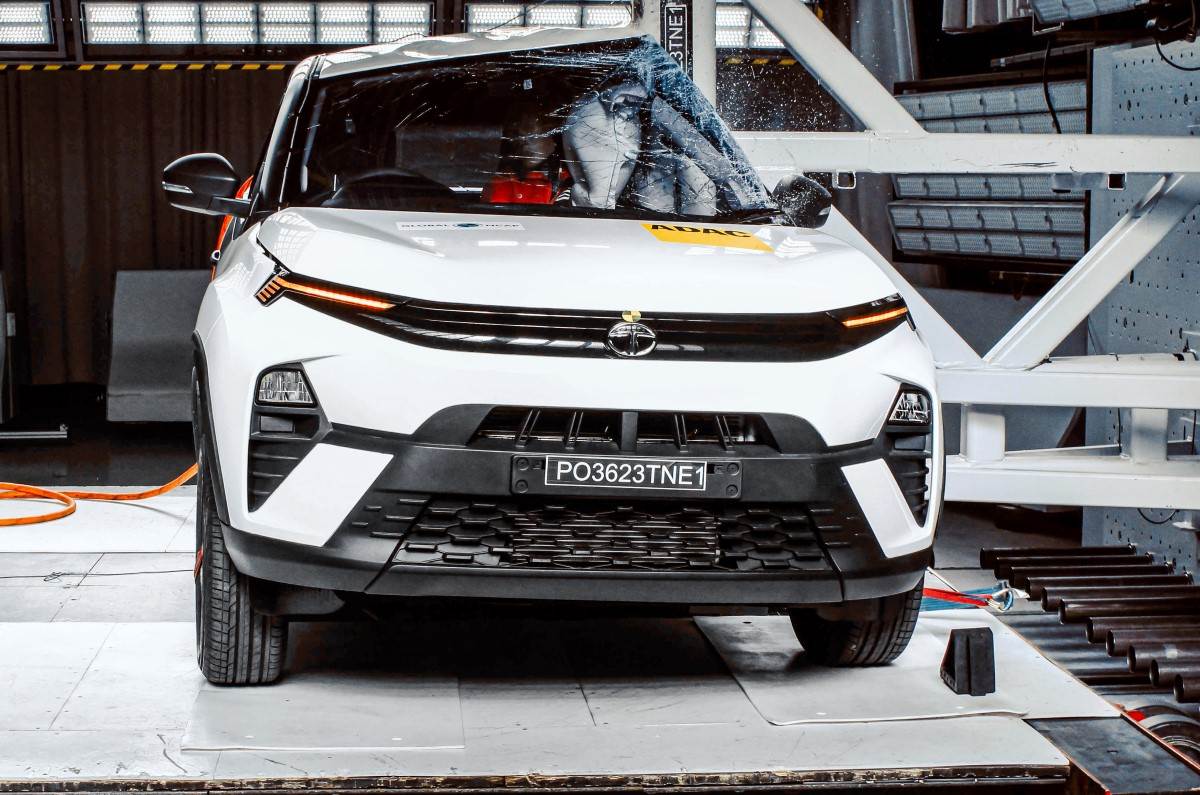
Tata’s Nexon compact SUV has been through a number of GNCAP’s crash tests, and in the most recent one, the Kia Sonet rival bettered its scores with 32.22/34 points for AOP and 44.52/49 on COP tests, giving it a 5-star rating in both categories. The pre-facelift Nexon had been awarded 5 stars for AOP and 3 stars for COP when it was tested in 2018. Incidentally, the Nexon facelift’s score was also the second highest in the Safer Cars For India campaign.
The Nexon provided adequate protection during the front impact, side-impact and side pole impact tests, except for the chest area in the last one. Standard safety features on the Nexon include six airbags, ESC, seat belt reminders, ISOFIX anchors and a passenger airbag disabling switch.
1. Tata Harrier/Safari - 5 stars (33.05 points)
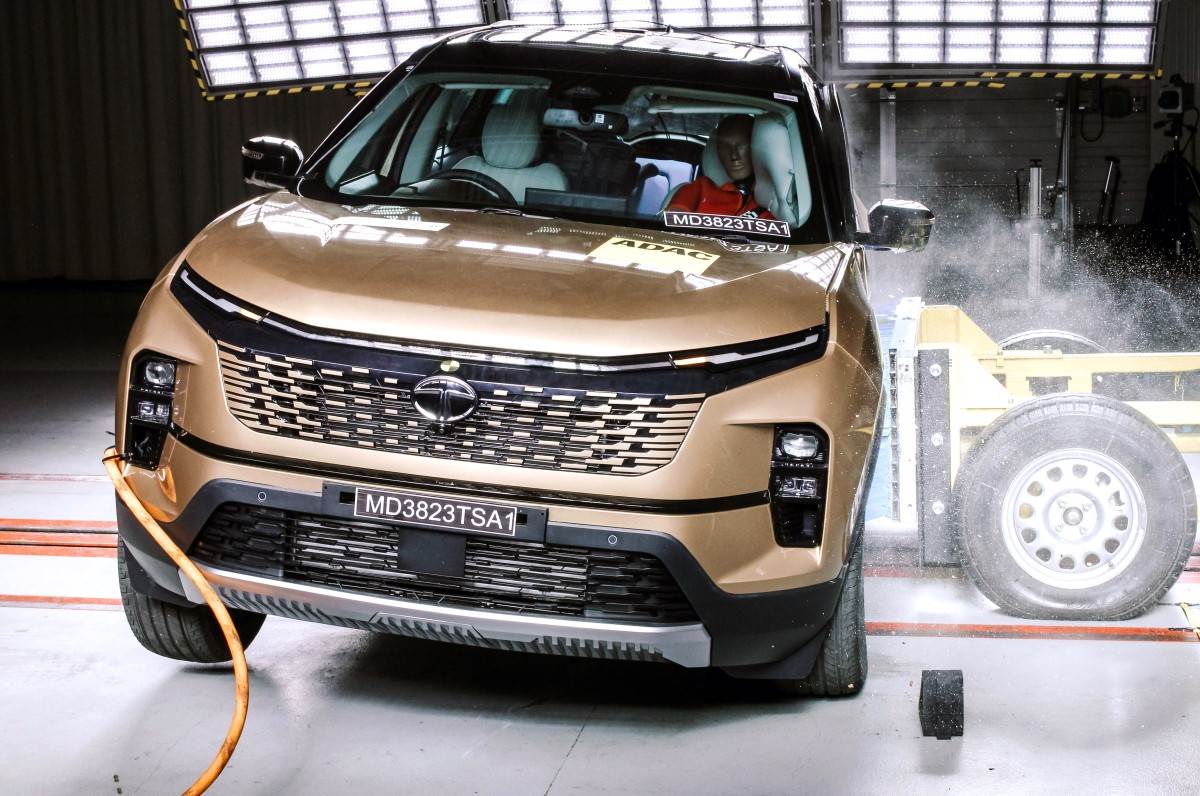
Tata’s flagship SUVs, the Harrier and Safari, are currently the highest rated models by Global NCAP; both get 5-star ratings in adult occupancy and child occupancy protection. The SUVs scored 33.05 out of 34 points in AOP tests and the body shell for both were rated as stable and capable of withstanding further loadings. Meanwhile, in the side impact test with a deformable barrier, the SUVs had “good protection” for the head, chest, abdomen and pelvis. In the COP tests, the Harrier and Safari scored 45 points out of 49. Standard safety features on both SUVs include six airbags, ESP, three-point seat belts with reminders for all seats, ABS with EBD and a tyre pressure monitoring system.
Also see:
Bolero Neo, Kia Carens, Honda Amaze Global NCAP crash test results video
Every new car, SUV tested by Global NCAP in 2024 in India
BNCAP to boost car, SUV safety in India
Euro NCAP to award higher safety rating to cars with fewer screens



